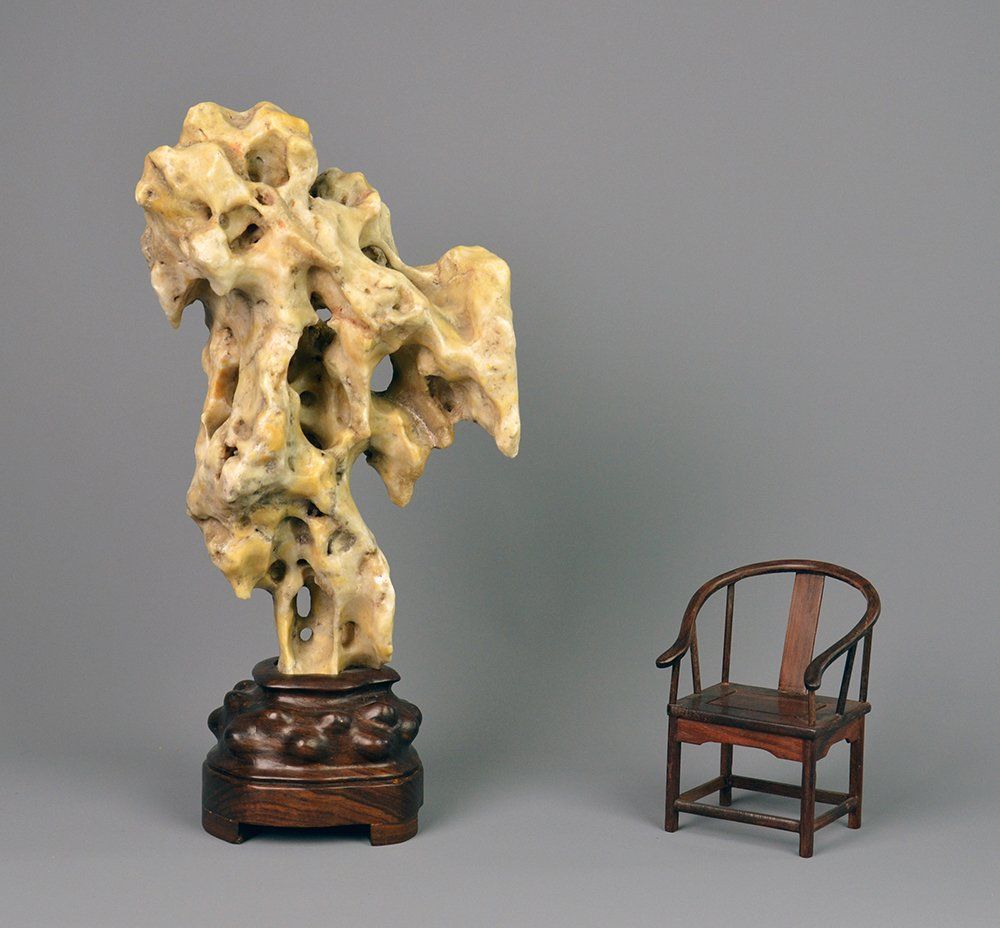Contemporary Viewing Stones DisplaysIntroducing Contemporary Viewing Stone Displays
By Thomas S. Elias, February, 2017
While it is beneficial to understand and be able to practice traditional Chinese and Japanese viewing stone display methods, it is equally important to have the ability to utilize more modern display methods that suit our modern lifestyles. Our homes, cultures and virtually every aspect of our modern societies are radically different from the traditions and life of the Qing dynasty or the late Edo and Meiji periods in Japan. Today most homes, even in Japan, do not have a tokonoma for the display of art objects. Nor do we have special buildings or large rooms appropriately equipped to receive guests as in traditional estates in China. Our living and working spaces have changed.
Contemporary viewing stone displays are not intended to replace traditional Asian modes of display; rather, the purpose is to expand opportunities for innovative displays that are more in keeping with our modern societies. This cultural adaptation is as fitting now as it was when the practice spread from China long ago.
Today, there is a broader range of stones available to collectors, especially in many of the western countries. Furthermore, a wider range of accessories is available that better fit each country’s traditions, arts, and culture. In North America, the bison and American eagle are more suitable imagery than the crane and turtle which are more directly associated with Asian cultures. Encouraging potential stone connoisseurs to experiment with nontraditional approaches to display stones is an effective way of building a larger stone appreciation community. We expressed the hope in the book Viewing Stones of North America, that contemporary collectors would seek ways to use native stones to create displays guided by local and regional influences. It is to be expected that the diversity of American culture would demand a variety of approaches to stone display.
Rick Stiles wrote in the above book that a distinct North American stone appreciation tradition will likely be driven by three factors—geology, landscape, and idiom. Stiles used the word idiom as an expression that has a meaning different from the literal. He was opening the door for people to use different stone types to create exciting new displays.
Contemporary displays will be a major component of a North American stone culture. Likewise, stone enthusiasts in other countries can develop parallel cultures that incorporate their own distinct features that fit with their customs.
The California artist, Richard Turner, explores the relationship between viewing stones and contemporary art in an essay in the featured book of the month. He notes that viewing stones and contemporary sculpture have more affinities than first meet the eye. Turner considers viewing stones to be a form of found-object art and looks to the work of contemporary artists from Asia, Europe and America for inspiration for his viewing stone displays.
Now, viewers and stone collectors following our VSANA web site can participate in this newly evolving culture and can contribute to it by submitting photographs and descriptions of their creative approaches to contemporary stone display. Working together and featuring a different contemporary display each month will contribute to a truly exciting year for the advancement of stone appreciation worldwide.


